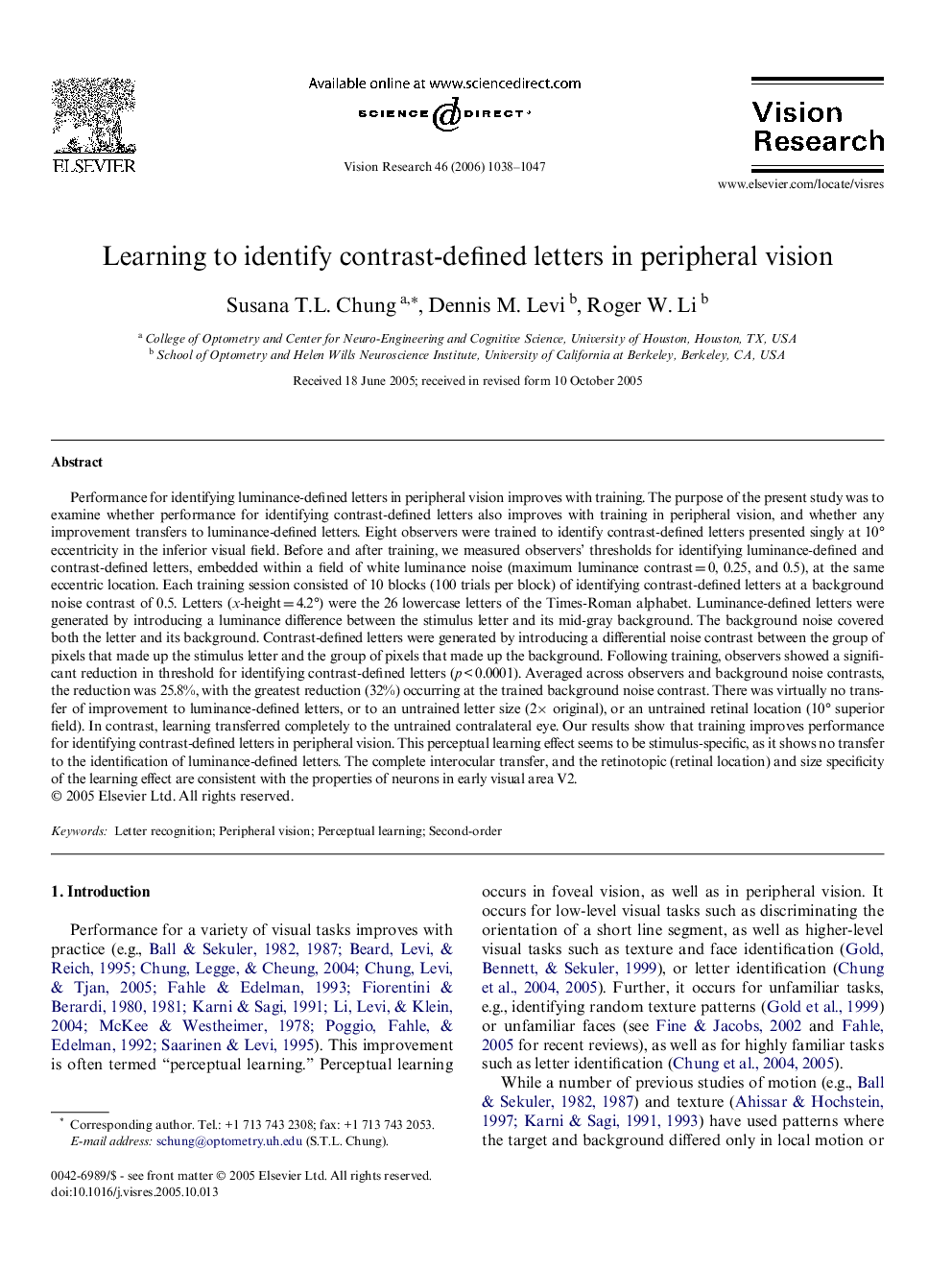| Article ID | Journal | Published Year | Pages | File Type |
|---|---|---|---|---|
| 4036361 | Vision Research | 2006 | 10 Pages |
Performance for identifying luminance-defined letters in peripheral vision improves with training. The purpose of the present study was to examine whether performance for identifying contrast-defined letters also improves with training in peripheral vision, and whether any improvement transfers to luminance-defined letters. Eight observers were trained to identify contrast-defined letters presented singly at 10° eccentricity in the inferior visual field. Before and after training, we measured observers’ thresholds for identifying luminance-defined and contrast-defined letters, embedded within a field of white luminance noise (maximum luminance contrast = 0, 0.25, and 0.5), at the same eccentric location. Each training session consisted of 10 blocks (100 trials per block) of identifying contrast-defined letters at a background noise contrast of 0.5. Letters (x-height = 4.2°) were the 26 lowercase letters of the Times-Roman alphabet. Luminance-defined letters were generated by introducing a luminance difference between the stimulus letter and its mid-gray background. The background noise covered both the letter and its background. Contrast-defined letters were generated by introducing a differential noise contrast between the group of pixels that made up the stimulus letter and the group of pixels that made up the background. Following training, observers showed a significant reduction in threshold for identifying contrast-defined letters (p < 0.0001). Averaged across observers and background noise contrasts, the reduction was 25.8%, with the greatest reduction (32%) occurring at the trained background noise contrast. There was virtually no transfer of improvement to luminance-defined letters, or to an untrained letter size (2× original), or an untrained retinal location (10° superior field). In contrast, learning transferred completely to the untrained contralateral eye. Our results show that training improves performance for identifying contrast-defined letters in peripheral vision. This perceptual learning effect seems to be stimulus-specific, as it shows no transfer to the identification of luminance-defined letters. The complete interocular transfer, and the retinotopic (retinal location) and size specificity of the learning effect are consistent with the properties of neurons in early visual area V2.
